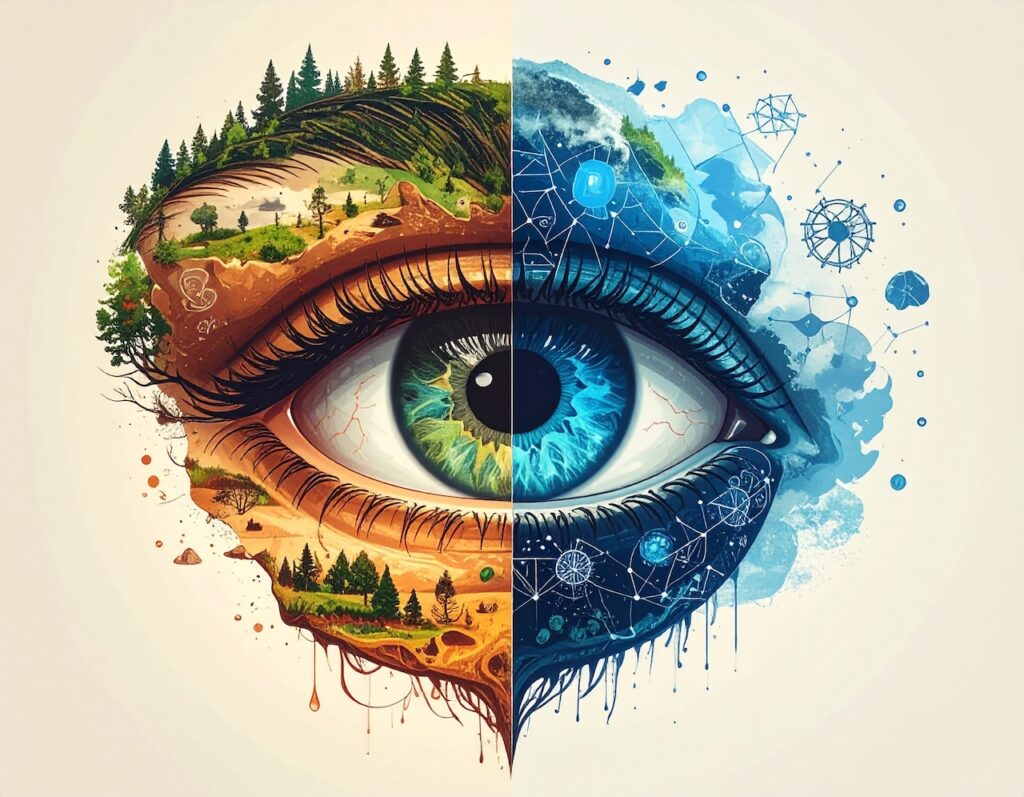This post is also available in Dutch.
How do we best understand the human brain and mind?
For centuries, science has searched for answers using microscopes, scans, and lab experiments. But another source of wisdom has been here all along: Indigenous knowledge, passed down through generations.
A recent article in Nature Perspectives highlights a powerful idea called Two-Eyed Seeing. It teaches us to look at the world with “one eye” grounded in Indigenous knowledge and the other in science. Together, these perspectives can create a richer, more balanced understanding of health and life.
Why does this matter?
Because brain science affects all of us. It guides treatments for mental health, shapes education, and influences how society views disability, trauma, and wellbeing. Yet too often, Indigenous voices and values have been ignored, or worse, disrespected. The authors remind us of past harms, such as when researchers used Indigenous peoples’ blood or personal stories without consent. These experiences have left deep scars and mistrust. Two-Eyed Seeing insists on a different path: one built on respect, trust, and true partnership, where Indigenous communities have a role in decision-making and in how the knowledge is used.
The paper shows how blending perspectives can lead to more humane and effective approaches. For example:
- Disability: Medicine often labels people by what they “lack”. Many Indigenous cultures instead see every person as whole and valued, focusing on community and balance rather than deficits.
- Suicide prevention: Colonialism and discrimination have fueled a mental health crisis, with suicide rates in some Indigenous communities several times higher than in non-Indigenous populations. Healing efforts that restore culture, language, and connection to land, together with medical care, are key to building resilience and hope.
- Migration and environment: Displacement, climate change, and loss of traditional lands deeply affect mental health. Indigenous traditions of care for land and community resilience can guide global responses.
Emphasising inclusivity
At its heart, Two-Eyed Seeing is about humility. It asks scientists to step back and recognise that no single worldview has all the answers. Research offers powerful tools, but Indigenous knowledge holds wisdom about relationships, harmony and balance that science alone cannot capture.
This approach also points to a bigger truth: brains, like people, are diverse. There is no single “normal” brain. Our experiences, cultures, and environments shape us. Honouring that diversity is essential if we want neuroscience to serve everyone fairly.
The message is clear: to build a healthier future, we must learn to see with both eyes open. By weaving together Indigenous and scientific knowledge, we can create science that is not only smarter but also kinder, more inclusive, and more just.
Author: Vivek
Buddy: Charlotte
Editor: Helena
Translator: Natalie
Editor translation: Maartje
